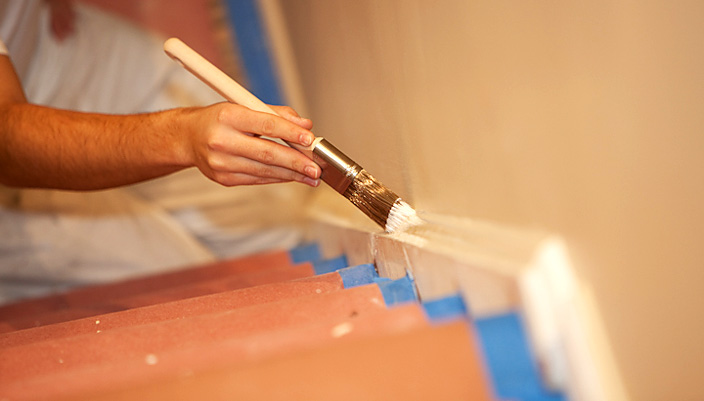We’ve spent a good amount of time in the past talking about how essential it is to work with quality paint products. Bargain options may seem attractive, but at the end of the day they create more work, more expense, and less desirable results.
In short, quality matters.
Today, let’s take a step back in the process and talk about your brush. What kind(s) do you need, and are bottom of the barrel options just as good as top-shelf specimens?
Paint Brush FAQ – Picking the Perfect Brush for Your Job
Here are a few common questions we’ve encountered in the past (and, while you’re reading, be sure to take a look at these essential interior painting tips as well!).
Is a more expensive brush really worth it?
This a valid question. After all, it’s easy to see your brush as nothing more than a short-distance vehicle. In reality, however, a quality brush is absolutely worth the investment. You’ll find that the paint is easier to apply, easier to control, and that the product will be applied more efficiently. As an additional benefit, a better brush will last longer with the right cleaning and care. An enduring investment is always a better investment.
Are natural or synthetic fiber bristles better?
It depends largely on the type of paint you’re applying, but for most latex applications synthetic (nylon) works very well.
What is the “ferrule,” and what should you look for?
The ferrule is the band that connects the bristles to the handle. You should look for a rock-solid connection (cheap brushes will rattle a bit and feel loose), and for one made with rust-resistant metal.
Should you use an angled or flat brush? And, what size?
Aside from an adjustable wrench, it’s hard to think of a one-size-fits-all tool. The same is really true for your paint brushes. You’ll need a flat-edged brush for larger sections, and an angled brush for more intricate, detailed work. You’ll immediately feel the difference between the two once you get brushing.
To get your collection started, look for a 3-4 inch brush for long, straight lines, and a 1.5 inch brush for those tighter spaces.
Your Very Best Option? Contact a Reputable Painting Company
If you have any questions about your particular painting project, we recommend talking to an experience professional. As valuable and useful as the right tools might be, there is simply no replacement for experience, craftsmanship, and an expert hand.
